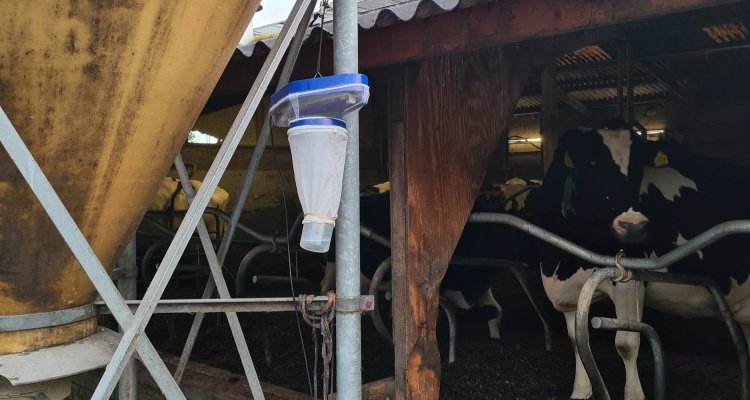
News
Bluetongue virus type 3 frequently detected in Dutch midges
Midges found on sheep and cattle farms are frequently infected with bluetongue virus serotype 3. This is evident from analysis by the NVWA Centre for Vector Monitoring (NVWA-CMV) and Wageningen Bioveterinary Research (WBVR, part of Wageningen University & Research).
Bluetongue virus serotype 3 (BTV-3) was first detected in the Netherlands in September 2023. The virus then spread rapidly over a large part of the Netherlands. NVWA-CMV and WBVR* investigated which midges species were involved in this blue tongue outbreak.
To conduct this study, in October and November midge traps were hung on six sheep and/or dairy farms where bluetongue previously had been identified. These farms were all located in the central part of the Netherlands. The CMV laboratory identified the midges based on microscopic analysis of morphological characteristics down to species and sex. Female midges of the same species that had previously obtained a blood meal from a ruminant (and could therefore transmit the virus) were grouped into so-called pools. WBVR then tested these pools of midges for the presence of BTV-3.
Results
A total of 34,593 midges were captured. The majority of the midges were identified as belonging to one of six different livestock-related species. They were the species: Culicoides chiopterus, C. obsoletus, C. scoticus, C. punctatus, C. dewulfi and C. pulicaris. C. imicola, the species non-native to the Netherlands, was not found in this study.
The livestock-related midges species live in close proximity to livestock: they breed near livestock (in manure, silage, and so on) and have a strong preference for blood from sheep and cattle.
Analysis by WBVR shows that many of the captured midges carry the bluetongue virus. Out of 384 pools of midges tested, 179 (46.6%) were found to be positive for presence of the bluetongue virus. The virus was mainly detected in pools of the species C. chiopterus (67.3%), C. punctatus (57.7%) and C. obsoletus/scoticus (34.5%). “The high percentage of positive midges could be due to high virus circulation in the hosts, but also mean that BTV-3 is well absorbed in these six native midge species,” the researchers said. In addition, the large percentage of bluetongue-bearing midges may partly explain how the virus has been able to spread so rapidly through the Netherlands. The percentage of midges that tested positive for bluetongue in this study is significantly higher than during the BTV-8 outbreak in 2006-2008.
On farms where bluetongue-infected animals were known to be present, the virus was also found in the midges. The researchers conclude that midge species most commonly found in livestock are quite capable of transmitting the virus. “Interestingly, of the midges caught in the traps hung inside the barn, the percentage midges with bluetongue was higher,” the researchers note. “Given the wide presence of virus-carrying midges, the importance of vaccination to prevent bluetongue infection is once again underlined, for both sheep and cattle”, conclude the researchers.